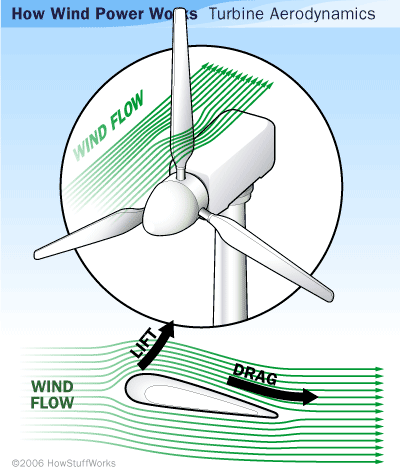
Fish Fertilize Trees
By Maya C. Lemaire


2018

2018

FEB 2019

Why Do Wind Turbines Have Three Blades?
The History of Windmills
In a world decaying under the heavy impacts of fossil fuels, renewable energy sources have been thrust into the limelight. Wind energy is a popular substitute; by using gales to turn turbines, and in turn, to turn generators, we are able to produce electricity.

.jpg)
Wind energy is a not a new phenomenon; humans have been using this technology for hundreds of years - from pumping water to grinding grain, windmills are ubiquitous in history. They, however, started gaining popularity as an alternative in the late 20th century, when oil shortages scared governments into seeking replacement energy sources. Now, in places like the Netherlands, the iconic silhouettes of these structures dot the landscape.
Drag and Resistance
But why three blades? Why not more? Why not less?
Answering this question lies in two objectives of good design: maximizing yield and stability. Wind turbines work on the principles of harnessing kinetic energy to turn into electricity. To do so, there needs to be an obstacle to slow and utilize the winds.
However, too much drag will result in a smaller power yield because more of the energy is lost trying to turn the turbine instead of being converted to electricity. Therefore, a good design of the turbine will have as little air resistance as possible without the turbine spinning too fast (and breaking the sound barrier).



Ideally, one turbine would create the least amount of drag, maximizing efficiency. However, a single turbine would cause stability issues, as the turbine would be unbalanced.
The second-best option would be a two-bladed windmill. Unfortunately, this is where a phenomenon known as “gyroscopic precession” comes into play. Gyroscopic precession is “a change in the orientation of the rotational axis of a rotating body”, as Wikipedia puts it. This also destabilizes the turbine.
Finally, we have the three bladed turbine. It is the design with the least air resistance, where stability isn’t as much of an issue.
Visualizer: Gyroscopic Precession

Are the three blades the best design?
As of now, yes. Wind energy does present a few challenges, such as causing noise and aesthetic pollution, harming wildlife, and having to compete with more profitable uses for land. Scientists have been working on a bladeless turbine to reduce all these factors, but that’s an article for another time.


By Sonam Okuda
(Year 11 Student at Bangkok Patana School)
Sources & Further Reading


